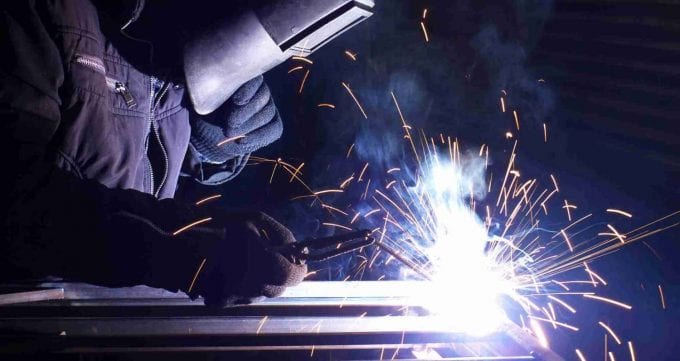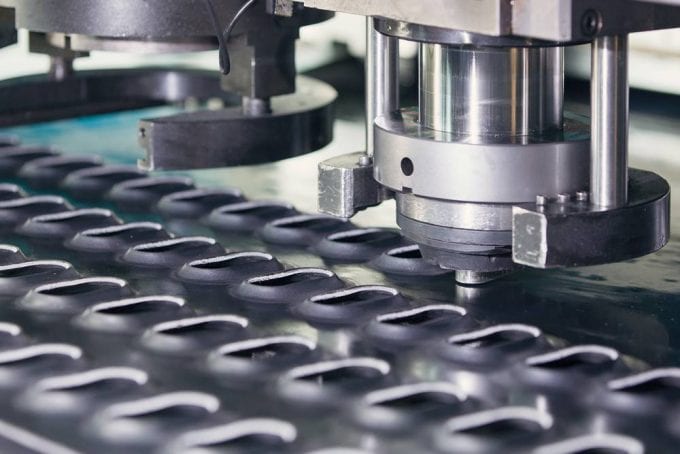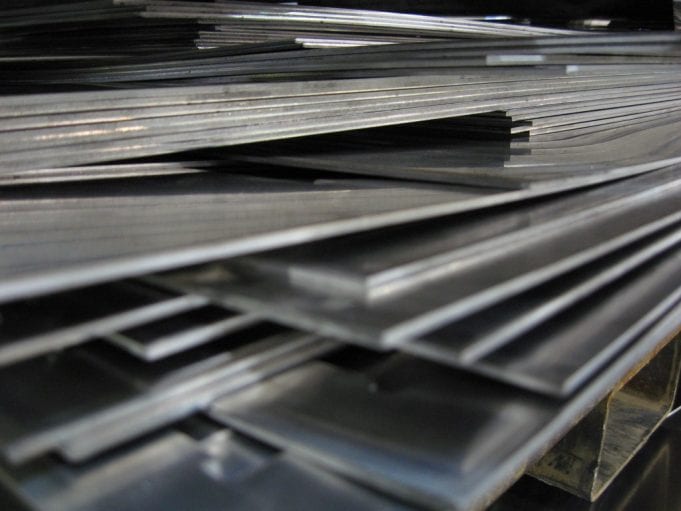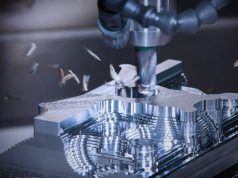The process of fabricating metal takes a lot of work and education to be successful. It requires a knowledge of the types of metals that can achieve the desired result, as well as the proper tools and machinery to make that outcome possible.
So what all goes into it? It starts by understanding the materials involved and then all of the different ways that metal can be shaped to suit industry purposes.
What metals are used in fabrication?

As a general rule, the most well-rounded metals to use in metal fabrication for industrial purposes are steel, copper, or iron. These metals are dynamic and strong enough to fit the needs in most scenarios. Steel isn’t a metal that’s always made up of the same properties, however. In fact, there are four different classifications of steel that define the strength of the metal:
- Carbon Steels – Carbon steels make up roughly 90% of steel produced. Succinctly, they have higher carbon content than the other steels on the list. The reason that matters is that high-carbon steels are extremely strong, but have less potential for welding or reshaping.
- Alloy Steels – The defining trait of alloy steel is that it contains extra elements mixed in like chromium, nickel, or aluminum. These alloys are added to steel to help the steel suit whichever purpose for which the metal is needed.
- Stainless Steels – Stainless steels are perhaps the most well-known steels for most of the population. Stainless steel appliances, for example, are a desired luxury in homes these days. The key to stainless steels is chromium being added as an alloy to reduce corrosion. The result is a durable metal that can be used in a myriad of ways.
- Tool Steels – Tool steels are pretty easy to understand. These steels are meant to be reshaped into tools that can be used either around the home or in factories. Tool steel is made from tungsten, cobalt, and other alloys that will increase a metal’s heat resistance and durability.
These steels are graded according to the standards set by the American Iron and Steel Institute and the Society of Automotive Engineers. They provide grade specifications related to temperature, hardness, and flexibility. Moreover if you want to learn more about this process you can visit https://ratemywelder.com/.
The Fabrication Process

In metal fabrication, the processes include design, cutting, forming, and assemblage of metals according to design specifications provided by mechanical design engineers from their engineering drawings. These designs may be done in-house by metal fabricators with a staff of design engineers or fabricators who may receive these designs from their engineering clients.
The second phase of metal fabrication processes is cutting metals to design sizes, weights, and structural shapes. This is the stage at which a metal cutting machine cuts metal sheets into pre-designed shapes. Today’s metal cutting equipment is equipped with CNC (Computer Numerical Control) high-speed lasers that more accurately cut metal into various shapes.
Now, these metal shapes are ready to be formed and assembled. For example, if an industrial manufacturing company requires a dust collector to collect dust from their processes, they engage the services of a metal fabricator to create metal housing for the motor, fan, inputs, outputs, and any connecting ductwork that may be needed. For a look at all the machinery used within the fabrication industry, Revelation, a machinery company, has a catalog of machinery needed throughout the process.
Before the metal housing has internal mechanisms installed, metal walls are assembled by the fabricator.
Industries Related to Metal Fabrication
Industries that are most related to metal fabrication are mechanical engineering companies that design and install various types of industrial equipment. Others include the iron welding, blacksmith, and welding industries.
Industries that Use Products Made by Fabricating Metal

Industries that rely on and use products made by fabricating metal include the automotive, construction, military and defense, aerospace and consumer products such as tools, hand tools, appliances, indoor and outdoor furniture, and business and office equipment. In addition, original equipment manufacturers (OEM) create custom products such as computer hardware and housings for electronics.
Everything Else You Need to Know About Metal Fabrication
No matter where people go, they will find metal fabrication. For example, the common paper clip is made from galvanized steel and metal fabricated through design, cutting, and forming to the iconic paper clip shape.
Even that metal spring that traps an errant mouse is metal fabricated. On a larger identifiable scale, rain downspouts and gutters, housing for HVAC equipment, and residential ductwork are all metal fabricated.
Piping is found in most structures to carry water and natural gas to homes and buildings, although cast iron piping has been replaced by PVC or copper.
Municipal water and sewage systems transmit fluids from homes and buildings to wastewater treatment plants through cast iron piping. Cast iron piping is still in use and is fabricated by welders who fit cast iron piping connections using welding flux according to piping designs.
In the sports world, metal fabrication is a necessity to create football goalposts. These are fabricated from heavy gauge steel and aluminum. Fabricators cut these to measure from approximately four to five inches thick. The goal post’s gooseneck, the strongest metal piece that measures five inches thick, is fabricated at a 90-degree arc and is the support for the crossbar and uprights.
You also need to know all of the doors, aluminum and steel windows, window frames, and door frames, as well as metal safety stair treads, are all metal fabricated. Aluminum siding and roofing are also metal fabricated. Metal photo frames, drinking cups, and lamp bases are custom cut by metal fabricators.
Professional Metal Fabricators

A metal fabricator seeking a position in industrial metal fabrication needs to have a high school diploma, completed a course of study in structural design, certification, and have good reading comprehension and active listening skills.
Metal fabrication jobs enjoy steady growth, and depending on the job applicants’ qualifications and company policies, salaries range at around $45,000 for entry-level positions.
The world of metal fabrication enjoys stable growth due to the fact that metal fabrication spans a wide range of industries that rely on their services and skills.
Today, the metal fabrication industry is composed of large and small companies that have built a high ranking brand name as well as a reputation for accuracy, reliability, and efficiency.









